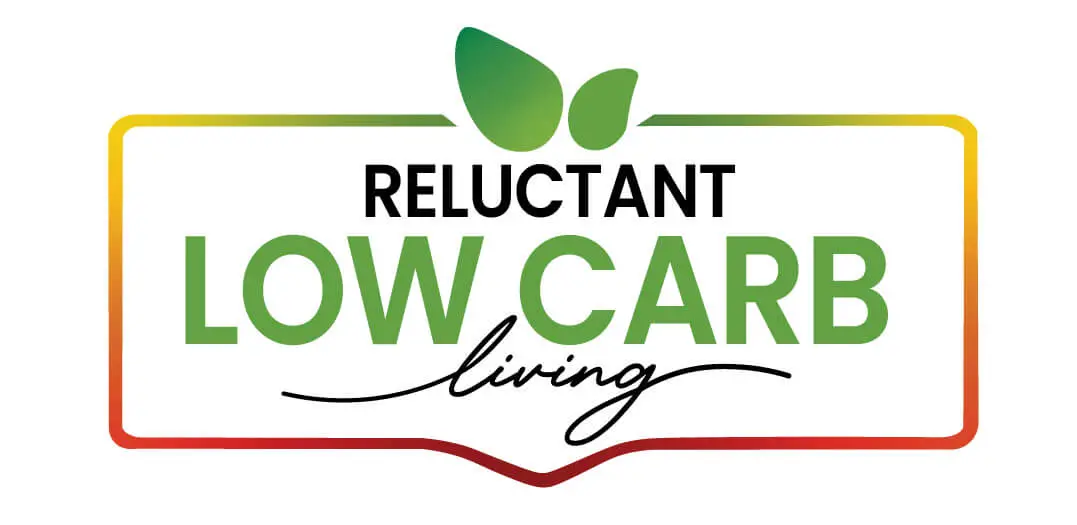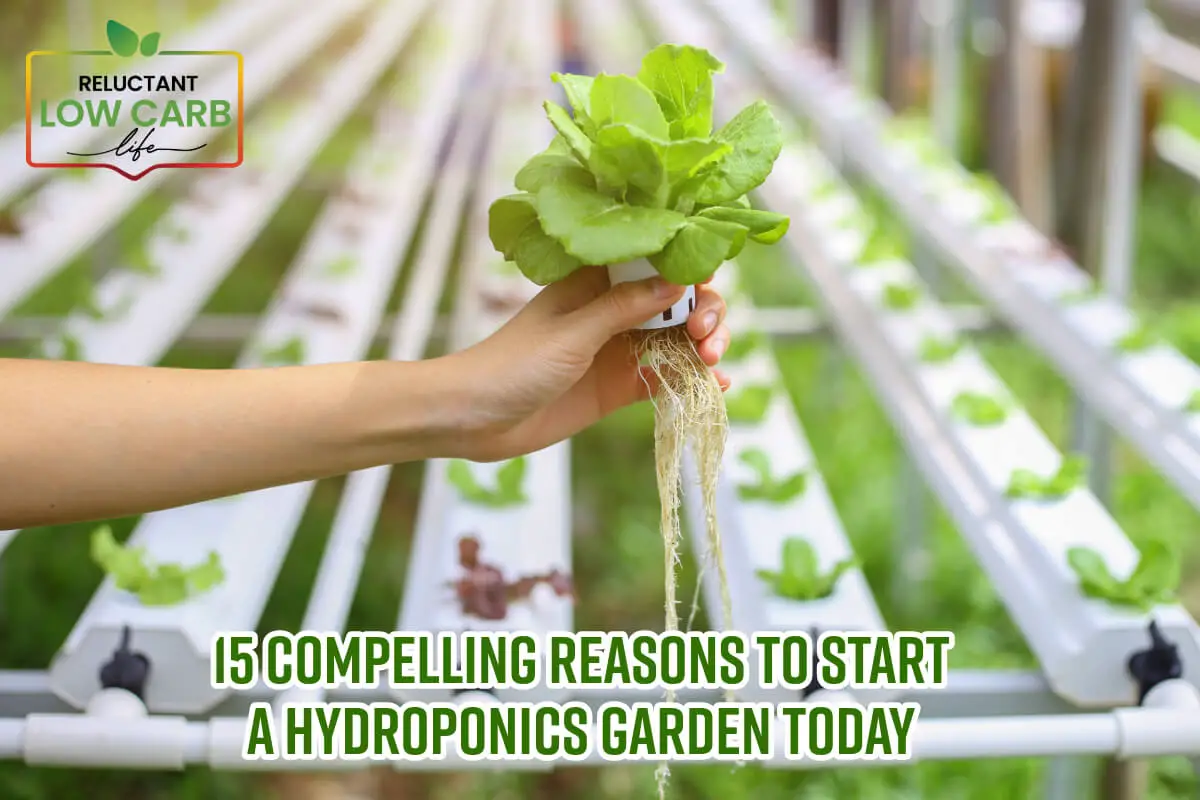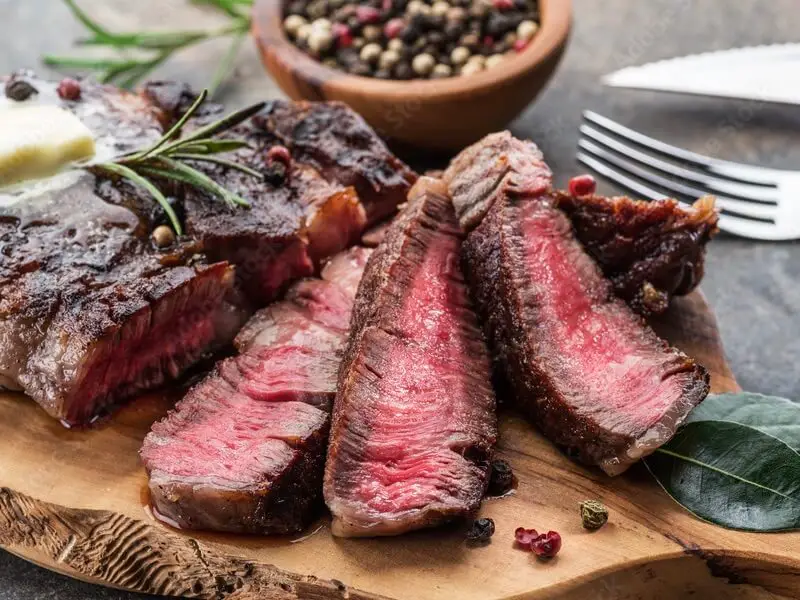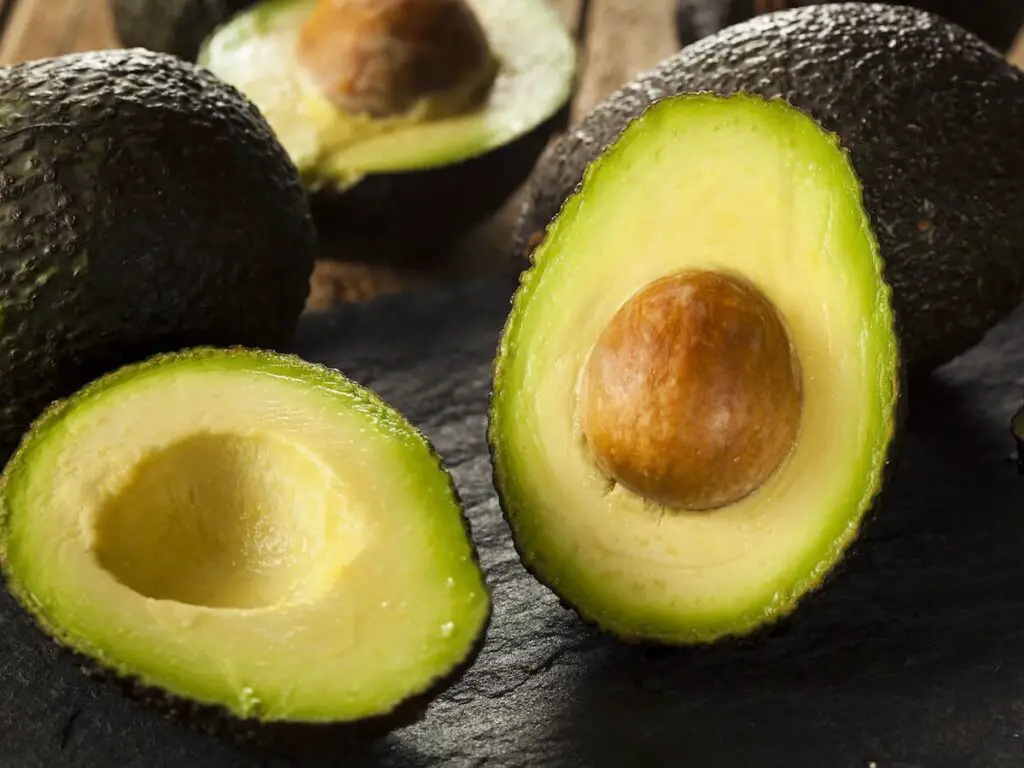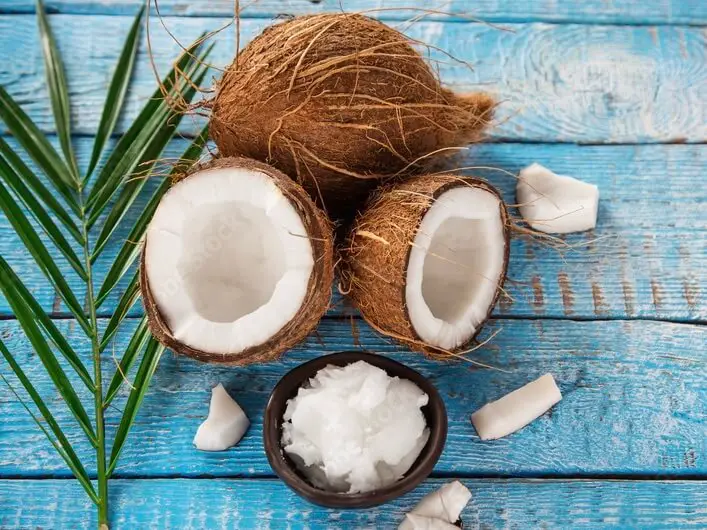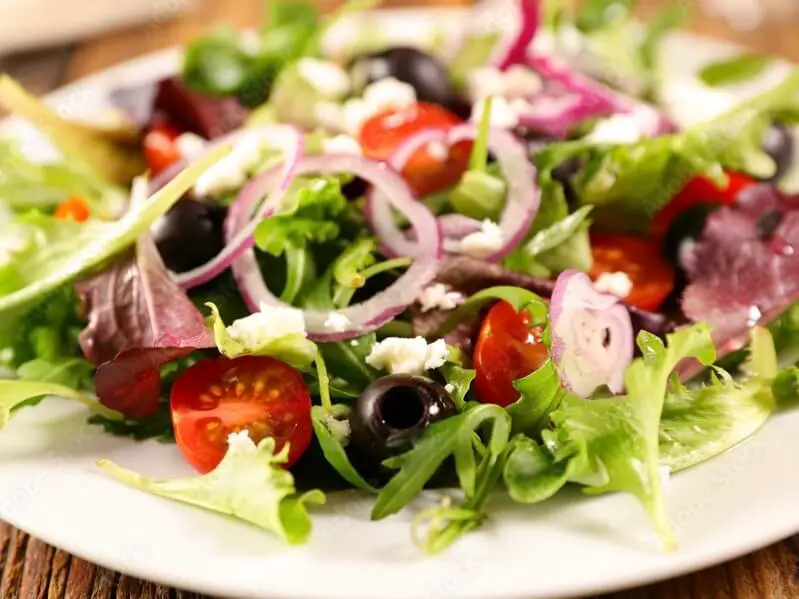In today’s fast-paced world, where space is often limited and access to fresh, nutritious food can be challenging, many people seek alternative ways to grow their produce.
Hydroponic gardening offers a perfect solution, allowing you to cultivate fresh vegetables, herbs, and fruits in a controlled environment, even in the smallest spaces. Whether you’re a seasoned gardener or a beginner, hydroponics can revolutionize your thinking about gardening. Here are 15 reasons why you should start a hydroponics garden today.
Table of Contents
- 15 Powerful Reasons To Begin Your Hydroponic Garden Today
- 1. Space Efficiency: Grow More In Less Space
- 2. Grow Indoors or Outdoors
- 3. Enjoy Fresh, Nutritious Food
- 4. Water Conservation: Use Less Water
- 5. Faster Plant Growth and Higher Yields
- 6. No Weeding Required
- 7. Reduce the Need for Pesticides
- 8. Consistent Quality and Taste
- 9. Easy to Get Started
- 10. Grow Exotic or Out-of-Season Plants
- 11. Lower Environmental Impact
- 12. Customizable Nutrient Solutions
- 13. Educational and Fun for All Ages
- 14. Cost-Effective in the Long Run
- 15. Perfect for Urban Living
- How To Start Your Own Hydroponics Garden
- Best Places To Set Up A Hydroponics Garden
- Related Question
15 Powerful Reasons To Begin Your Hydroponic Garden Today
At Reluctant Low-Carb Life, we believe that a healthy lifestyle is built on three fundamental principles: staying active, enjoying satisfying meals, and prioritizing fresh, nutritious ingredients.
Among these, fresh food is crucial, not just for its nutritional benefits but also for its impact on overall well-being. However, in our fast-paced, modern world, gaining consistent access to fresh produce can be challenging—especially for those living in urban areas with limited space or climates that don’t allow year-round gardening.
As more people seek alternative ways to ensure a steady supply of fresh, nutritious food, hydroponic gardening emerges as an ideal solution. This innovative approach lets you grow vegetables, herbs, and fruits in a controlled environment, even in the smallest spaces.
Whether you’re a seasoned gardener or a complete novice, hydroponics can transform how you approach gardening. Here are 15 reasons why you should consider starting a hydroponic garden today.
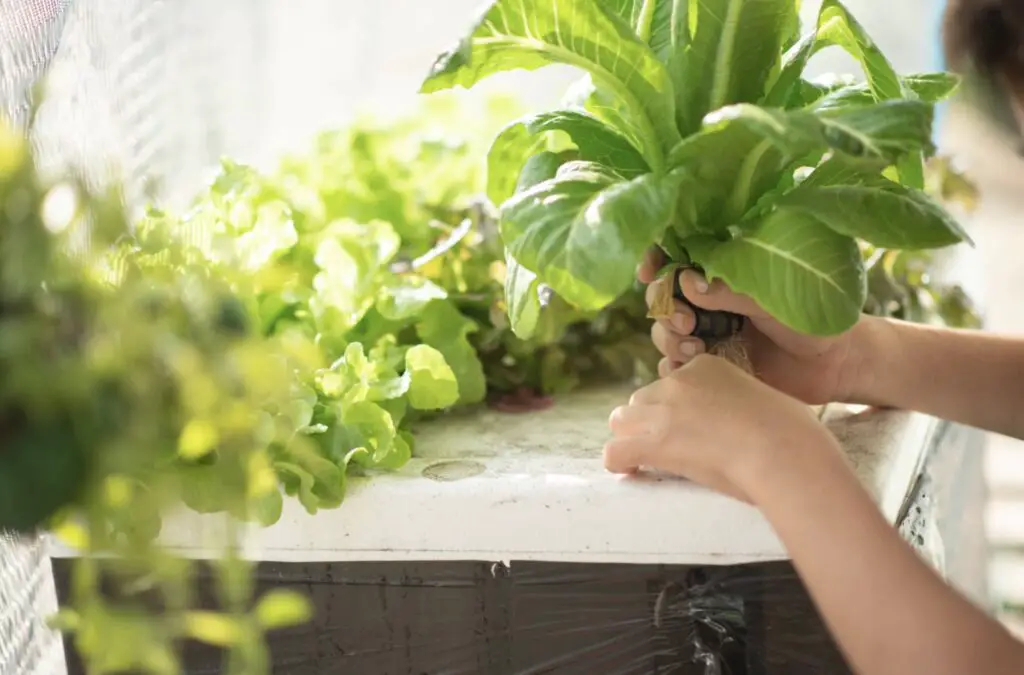
1. Space Efficiency: Grow More In Less Space
One of the most significant advantages of hydroponic gardening is its ability to maximize space. Traditional gardening requires large plots of land, but hydroponics can be set up in a small area, even indoors.
Vertical hydroponic systems, for instance, allow you to grow a significant amount of food in a small footprint by stacking plants on top of each other. This makes hydroponics ideal for urban dwellers or anyone with limited outdoor space.
2. Grow Indoors or Outdoors
Hydroponic gardens are versatile and can be set up indoors or outdoors, depending on your available space and climate. Indoor hydroponic systems allow you to grow plants year-round, regardless of the weather outside.
This is particularly beneficial if you live in a region with a harsh climate or a short growing season. With hydroponics, you can create a garden in a spare room, a basement, or even a closet, ensuring a constant supply of fresh produce.
3. Enjoy Fresh, Nutritious Food
Eating fresh food is essential for maintaining a healthy lifestyle. When you grow your food using hydroponics, you have control over what goes into your plants, ensuring that your produce is free from harmful pesticides and chemicals.
Freshly harvested fruits and vegetables are more nutritious than store-bought produce, which often loses nutrients during transportation and storage. With hydroponics, you can enjoy the freshest, healthiest food possible.
4. Water Conservation: Use Less Water
Hydroponic systems are designed to use water more efficiently than traditional soil-based gardening. In hydroponics, water is recirculated within the system, meaning less water is wasted through evaporation or runoff.
Some hydroponic systems use up to 90% less water than conventional gardening, making it an environmentally friendly option, especially in scarce water.
5. Faster Plant Growth and Higher Yields
Plants grown in hydroponic systems often grow faster and produce higher yields than those grown in soil. This is because they have direct access to a nutrient-rich water solution that provides everything they need to thrive.
The controlled environment of hydroponics also eliminates many variables that can hinder plant growth, such as poor soil quality, pests, and inconsistent watering. As a result, you can harvest your crops more frequently and enjoy a continuous supply of fresh produce.
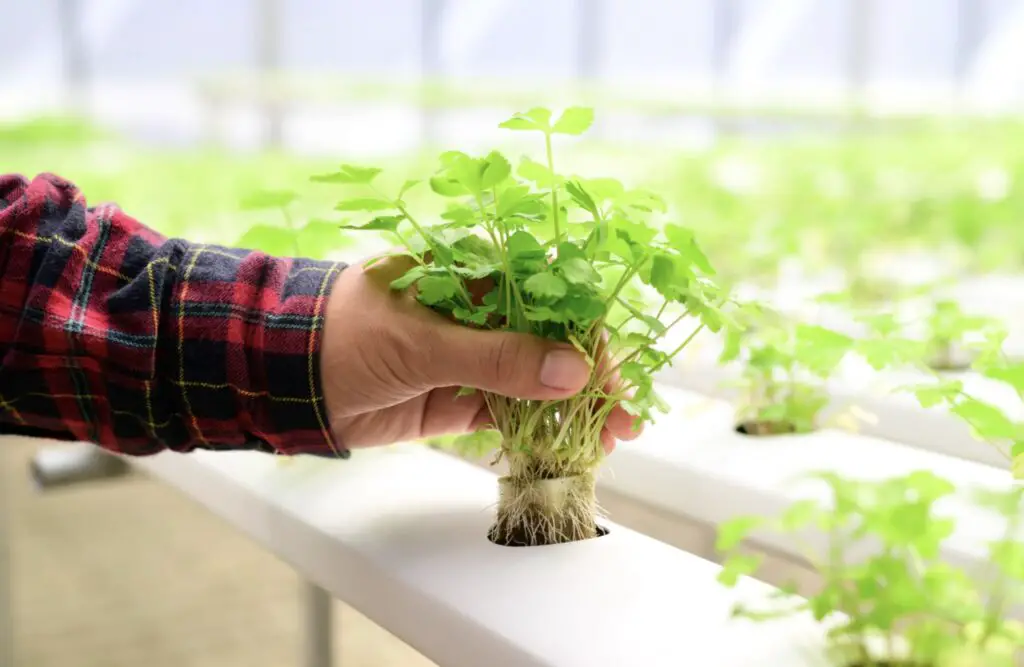
6. No Weeding Required
One of the most tedious aspects of traditional gardening is dealing with weeds. Weeding can be time-consuming and physically demanding, especially in more extensive gardens.
In a hydroponic system, there’s no soil, so there are no weeds to worry about. This means you can spend more time tending to your plants and less time battling unwanted vegetation.
7. Reduce the Need for Pesticides
Because hydroponic gardens are typically grown in controlled environments, such as indoors or in greenhouses, they are less susceptible to pests. This reduces the need for chemical pesticides, which can harm the environment and your health. Instead, you can use natural pest control methods or maintain a clean, controlled growing environment to keep your plants healthy.
8. Consistent Quality and Taste
You can expect consistent quality and taste from your produce when you grow your food using hydroponics. Store-bought fruits and vegetables can vary in flavor and texture, depending on how they are grown, harvested, and stored.
With hydroponics, you can ensure that your produce is always fresh, ripe, and delicious, as you have control over the entire growing process.
9. Easy to Get Started
While hydroponics might sound complex, it’s easier to start than you think. Many beginner-friendly hydroponic systems are available, ranging from simple DIY setups to more advanced kits with everything you need.
You can start small with a basic system and gradually expand as you become more comfortable with the process. Plus, plenty of online resources, videos, and forums help you.
10. Grow Exotic or Out-of-Season Plants
Hydroponics allows you to grow plants that might not thrive in your local climate or soil conditions. For example, in a cold climate, you can use hydroponics to grow tropical plants like pineapples or citrus fruits indoors.
Similarly, you can grow out-of-season vegetables and herbs, ensuring you can always access your favorite produce, no matter the time of year.
11. Lower Environmental Impact
Hydroponic gardening has a lower environmental impact compared to traditional farming methods. It requires less land, uses water more efficiently, and can be done without harmful pesticides and herbicides.
Additionally, because hydroponic systems are often set up locally, they reduce the need for long-distance food transportation, which helps lower carbon emissions. By starting a hydroponic garden, you’re contributing to a more sustainable way of producing food.

12. Customizable Nutrient Solutions
Hydroponic gardening gives you complete control over the nutrients your plants receive. This means you can tailor the nutrient solution to each plant’s needs, ensuring optimal growth and health.
Whether growing leafy greens, tomatoes, or strawberries, you can adjust the nutrient levels to achieve the best possible results. This level of control is difficult to achieve in traditional soil gardening.
13. Educational and Fun for All Ages
Hydroponic gardening is not only productive but also educational and fun. It is a great way to learn about plant biology, chemistry, and sustainability.
A hydroponic garden can be a fantastic educational tool if you have children. It teaches them where food comes from and the importance of healthy eating. Plus, it’s a rewarding hobby that people of all ages can enjoy.
14. Cost-Effective in the Long Run
While the initial setup cost of a hydroponic system can be higher than traditional gardening, it becomes cost-effective in the long run. You’ll save money on water, fertilizers, and pesticides, and because hydroponic systems often produce higher yields, you’ll get more food for your investment.
Additionally, growing your food can reduce grocery bills, mainly if you focus on high-cost produce like herbs, tomatoes, and berries.
15. Perfect for Urban Living
Finally, hydroponic gardening is perfect for urban living. Hydroponics offers a viable solution in cities where limited space and access to fresh food can be challenging.
Whether you live in an apartment, a townhouse, or a small house with little outdoor space, you can create a thriving garden with fresh, healthy food year-round. Hydroponics brings the joy of gardening to those who might not otherwise have the opportunity.
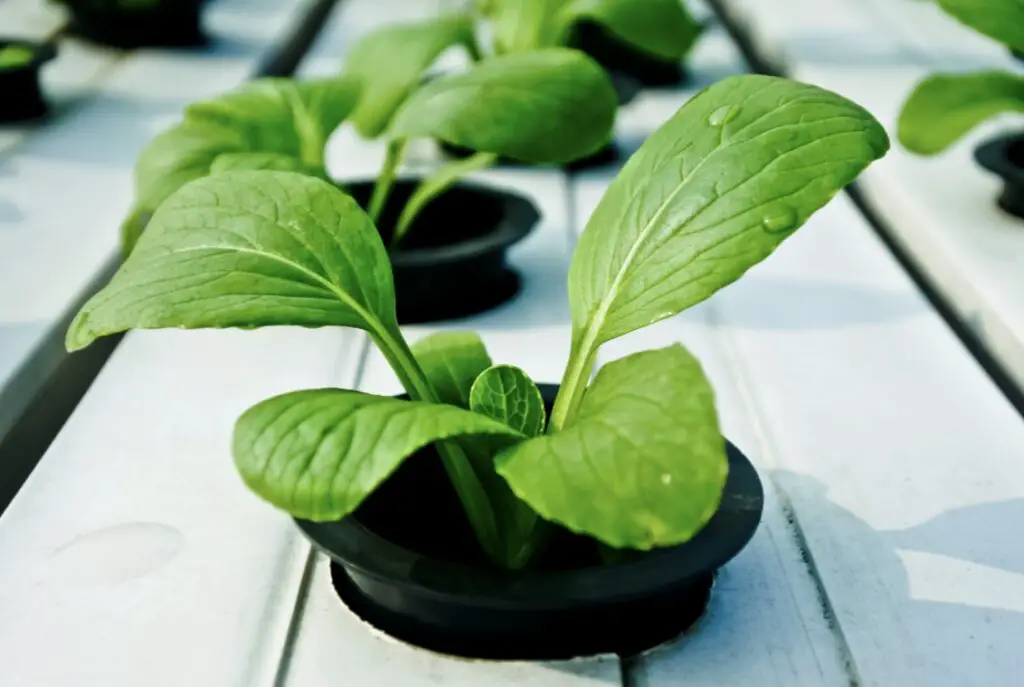
How To Start Your Own Hydroponics Garden
Starting a hydroponic garden is easier than you might think. Here’s a step-by-step guide to help you get started:
1. Choose Your Hydroponic System
There are several types of hydroponic systems, each with its advantages. Some popular options include:
- Kratky Method: A simple, passive system that doesn’t require electricity or pumps. It is ideal for beginners and small plants like lettuce.
- Deep Water Culture (DWC): Plants are suspended in a nutrient solution with their roots submerged in water. This method is easy to set up and works well for larger plants like tomatoes.
- Nutrient Film Technique (NFT): A thin film of nutrient solution flows over the roots, providing constant nourishment. This system is efficient but requires more monitoring.
- Aeroponics: Plants are suspended in the air, and roots are misted with nutrients. This method yields fast growth but is more complex and expensive.
Choose a system that fits your space, budget, and the types of plants you want to grow.
2. Select Your Growing Medium
In hydroponics, plants need a growing medium to support their roots. Common options include:
- Clay Pellets: Lightweight and reusable clay pellets provide good aeration and support.
- Rockwool: Made from spun volcanic rock, rockwool retains moisture well and is ideal for seed starting.
- Coconut Coir: A sustainable and natural option, coconut coir retains water and provides good root support.
We tend to use the Rockwool method mainly. But before you use it, be sure to soak the seeds in water for 24 hours and then change the water before planting them.
3. Set Up Your System
Once you’ve chosen your system and growing medium, it’s time to set everything up. Follow the instructions for your specific hydroponic system, and if you’re gardening indoors, set up your grow lights.
Ensure your system is stable, your plants have adequate light, and your water reservoir is filled with the appropriate nutrient solution.
4. Add Nutrients
Nutrients are crucial for plant growth in a hydroponic system. You can purchase pre-mixed hydroponic nutrient solutions or mix your own. Plants’ key nutrients include nitrogen, phosphorus, potassium, and trace elements like magnesium, calcium, and iron. Follow your specific nutrient mix instructions to avoid over or under-fertilizing your plants.
5. Monitor and Maintain
Regular monitoring and maintenance are essential for a successful hydroponic garden. Check your water’s pH and nutrient levels regularly and adjust as needed. Most plants thrive in a pH range of 5.5 to 6.5.
Also, monitor water levels and ensure that your plants get enough light. Depending on your system, you may need to clean and replace parts periodically to prevent clogs or algae buildup.
6. Harvest and Enjoy
Once your plants are mature, it’s time to harvest. One of the great benefits of hydroponics is that you can often harvest continuously, as plants like lettuce and herbs will keep growing after you trim them.
Enjoy the fruits (and vegetables) of your labor, knowing that you’ve grown fresh, healthy food right in your home.
Best Places To Set Up A Hydroponics Garden
The beauty of hydroponic gardening is that it can be done almost anywhere. Here are some of the best places to set up your hydroponic garden:
1. Indoor Spaces
- Kitchens: Place a small hydroponic system on a windowsill or countertop for easy access to fresh herbs and leafy greens.
- Basements: Basements offer a controlled environment with consistent temperatures, ideal for year-round growing.
- Spare Rooms: Convert a spare room into a dedicated indoor garden with grow lights and ventilation.
- Closets: With the right setup, a closet can be transformed into a mini-hydroponic garden for those with limited space.
2. Outdoor Spaces
- Balconies: If you have a balcony, you can set up a vertical hydroponic system to grow plants in a small area.
- Backyards: Larger outdoor hydroponic systems can be set up in backyards, especially if you want to grow various crops.
- Greenhouses: A greenhouse provides an ideal environment for hydroponic gardening, combining the benefits of outdoor light with controlled temperatures and humidity.
We have set up our hydroponics garden on a 5th-floor balcony in a city with over 7 million people. Although we have no land to grow anything, hydroponics allows us to grow our food.
3. Community Gardens
If you don’t have space at home, consider joining or starting a hydroponic garden in a community space. Community gardens are great for sharing knowledge, resources, and the joy of growing food with others.
Hydroponic gardening offers numerous benefits, from maximizing space to providing a steady supply of fresh, nutritious food.
Hydroponics is a fantastic option whether you want to reduce your environmental impact, save money, or enjoy growing your food. You can create a thriving garden that suits your needs and space with little time and effort.
Starting a hydroponic garden today can be the first step toward a healthier, more sustainable lifestyle. Whether growing indoors, outdoors, or in a community space, hydroponics lets you enjoy fresh, homegrown produce year-round.
So why wait? Start planning your hydroponic garden now and reap the rewards of this innovative and fulfilling approach to gardening.
At Reluctant Low Carb Life, we are staunch advocates of the Health Trifecta: Fullness, Fitness, and Freshness. Additionally, we embrace the pillars of health, wellness, and graceful aging. Our mission is to provide honest and precise information to individuals dedicated to adopting a healthy lifestyle while enhancing their fitness and well-being.
We have a free monthly newsletter that is filled with information and helps you remain updated. Subscribe to the Reluctant Low Carb Life newsletter by clicking here.
Listen to our weekly podcast, Reluctant Low Carb Life, on all the major podcast platforms by clicking here.
Follow us on Instagram and Facebook by clicking here.
Related Question
What Is It Like To Be A Sugar Addict?
Being a sugar addict means using sugary foods and drinks for emotional and psychological dependence. You may want to stop eating sugar, but it is hard to stop. You may also eat sugar to smooth over any emotions; you may have difficulty passing up any sugar treat you see.
You can read more about What Is It Like To Be A Sugar Addict? by clicking here.
How Long Does It Take To Recover From Sugar Addiction?
Sugar can be a long addiction. It may be something that you deal with your entire life. But the good news is that giving up sugar will make it easier to overcome the addiction. You must also find things you enjoy doing that can help replace sugar and sugary foods with healthy alternatives.
You can read more about How Long Does It Take To Recover From Sugar Addiction? by clicking here.
Number Of Days To Detox From Sugar So No More Cravings
You may suffer from sugar cravings if you know you are a sugar addict. The answer for you may be to go n a sugar detox. A sugar detox is a great way to get sugar out of your body and system.
You can read more about Number Of Days To Detox From Sugar So No More Cravings by clicking here.
